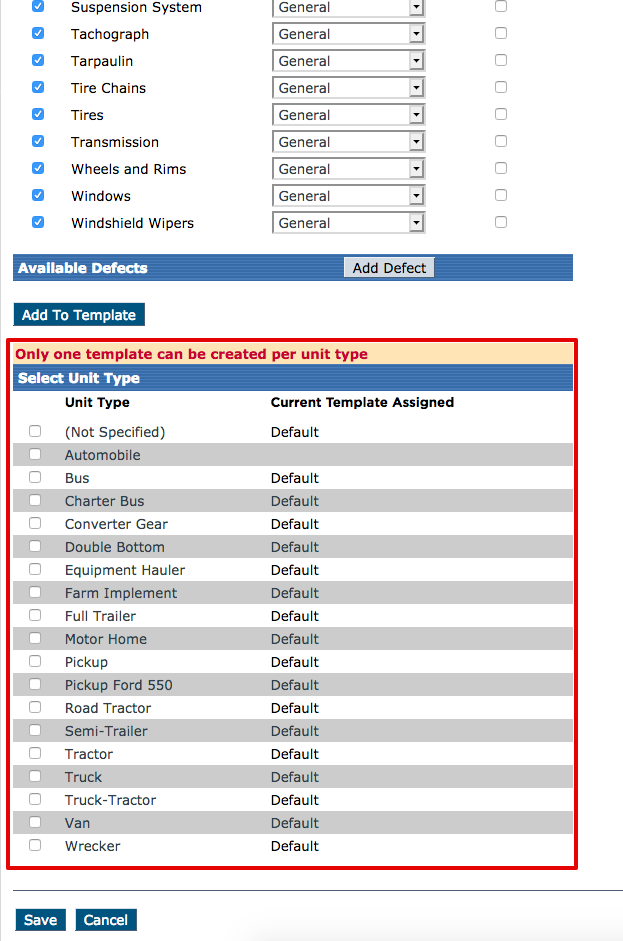DVIR Encompass Setup - 4. DVIR Templates
This DVIR support article refers to instructions for our Classic version of Encompass. For the New UI version of this article, visit: Encompass DVIR Setup-Templates Settings
DVIR Templates are used to create uniform inspections for specific unit types. For example, the vehicle inspection for a pick-up truck would not be the same as a vehicle inspection for a truck-tractor. These distinctions can be made using these templates. DVIR Templates are found by going to Setup in the drop-down menu in the upper right hand corner from the Vehicle Management tab.
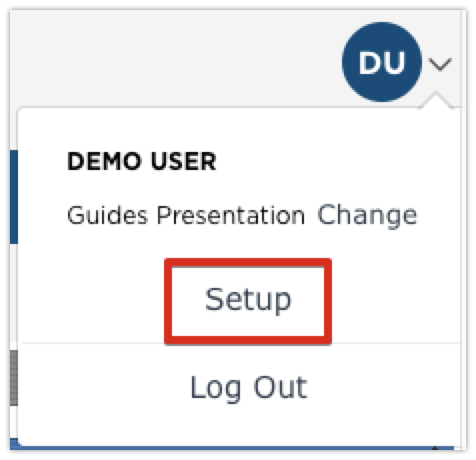
Scroll down to the Maintain Unit Maintenance Info box and click Maintain DVIR Templates.
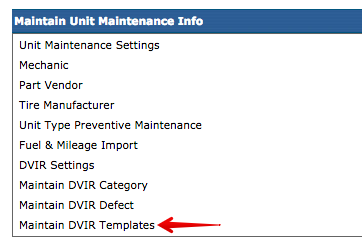
The list of existing templates will be listed here. To start with, a Default template has been created.

Creating and implementing DVIR templates has two key components: 1. Creating the checklist and 2. Assigning the template to the necessary unit types.
Creating a DVIR template
Notice that there isn't an Add New... at the top of the list of templates to create a new one. Instead, to create a new template, click Copy on the far right of the Default template.
Enter in a name for the new template. It could be something as simple as the unit type this is going to be associated with (i.e. Semi). Note: Be sure that the Show in List? box is checked otherwise this checklist will not display for the mobile user.
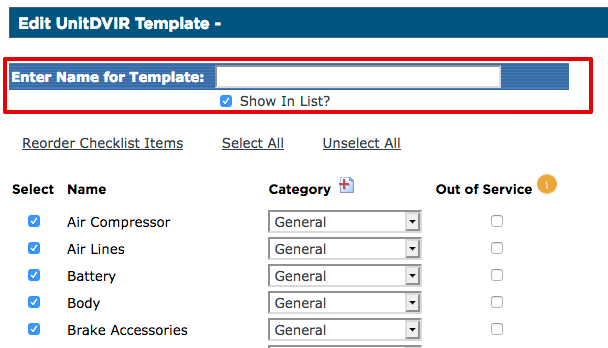
The next section will display all of the inspection or defect items. Use the checkboxes to the left of each item to determine which items should be included in this template. Then, assign them to a category using the drop down menu (if additional categories need to be added, administrators will have a small icon( ) next to the category header, which will allow them to add to the list without having to leave this page). If an inspection item is essential in which the vehicle would be put out of service if found to have a defect, check the box on the far right for Out of Service. Continue working through this list until the necessary defects have been selected and categorized. If the checklist needs to be reordered, click Reorder Checklist Items at the top of the list.
) next to the category header, which will allow them to add to the list without having to leave this page). If an inspection item is essential in which the vehicle would be put out of service if found to have a defect, check the box on the far right for Out of Service. Continue working through this list until the necessary defects have been selected and categorized. If the checklist needs to be reordered, click Reorder Checklist Items at the top of the list.
If a defect is reported and the defect is an Out of Service defect, the DVIR cannot be closed until that defect is resolved.
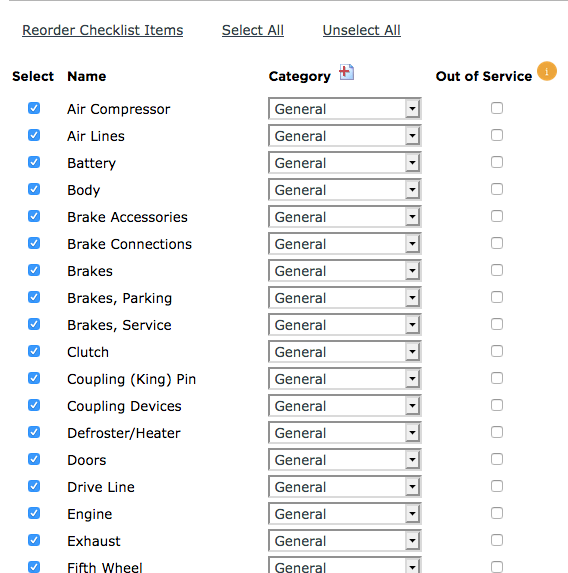
If additional inspection (defect) items were added to the system via Maintain DVIR Defects, they will be listed in the area beneath the checklist items titled Available Defects. If any of these items need to be added to the checklist, check the box to the left of the item and click Add to Template. If there were any additional inspection items that still need to be added, they can be added here by clicking Add Defect.

Assigning DVIR templates to Unit Types
The very next section after the Available Defects section is where the template is assigned to the specified Unit Types. Check the box next to the unit type(s) this template should be assigned to. Click Save when complete.
Notice the alert in red "Only one template can be created per unit type". This means that any given unit type can only have ONE template assigned to it. A single template can be assigned to as many unit types as needed.
